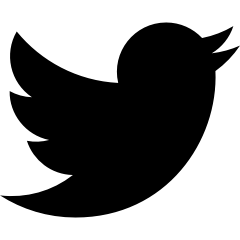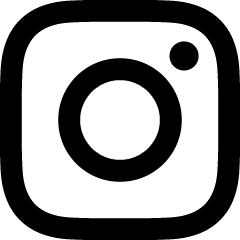

Above: Installation of Joan Tanner’s FLAW.
FLAW
Review
Sara Olshansky
Entering the Contemporary Arts Center in Cincinnati feels like walking into the belly of Brutalism. Designed by the late Zaha Hadid, its architecture consumes you. It is demanding and disorienting. To locate FLAW, visitors must navigate to the second floor of the building. The exhibition space, windowless and fortified with extensive concrete, feels subterranean and cavernous, like it somehow defies gravity, too heavy to be above groundlevel. The visitor rounds a corner and, there, Joan Tanner’s site-specific installation FLAW bounds wall to wall in what appears to be a duel between object and space. Hadid’s design, while richly stylized and aesthetically strong, stands alone, presenting artist Joan Tanner, her fabricator Alan Struebing, and curator Julien Robson with a challenge: either conform to the space or disrupt it.
Tanner’s installation, comprised of what she calls “generic materials,”1 labors to subvert the architecture with the very materials used to construct it. Yet, the results of each could not be more different. On one hand, Hadid’s building is sturdy, unyielding, and absolute. On the other, Tanner’s exhibition feels light and dynamic, bringing to mind the paradoxical and multifaceted works of Eva Hesse. Spiraling metal “skirts'' dance across the air.2 Plastic sheaths scallop and bevel around the industrial, concrete columns. Metal dow-rod and flexed plywood cocoons encased with plastic netting sporadically sprout from different points throughout the gallery. A handful of rogue C-clamps secure large, organic plywood shapes that appear as if they may float away without the point of contact. The work compresses and extends, balances and levitates. One might assume that such an installation, seemingly unfinished and precarious, could never stand up to such solid architecture. On the contrary, it is the very defiance to conform to its materials that afford the work its strength in the confrontation.
While the installation’s intentional maximalism is undeniable, it is equally important to consider what has been left untouched. Spaces between installation-points allow the viewer to circumnavigate the work in close proximity. Were this to be a closed dialogue between the artist and architect, there would be no negative space, no paths left for visitors to interact. One passes between wall and artwork, around plexiglass shields and concrete barriers, beneath soffits, suspension ropes, and flexitrack, through the thick of it all. We become players in this game. The audience is then presented with a choice: will you mediate between Tanner and Hadid, join the two, or refuse to engage altogether?
The viewer internalizes such a struggle as a participant, leading to a sensation that is intensely personal. Combined with an overall inability to totally master this visual field, the viewer leaves FLAW with a sense of being overwhelmed. The root of this conflict likely resides, in part, within people’s expectations of art and art spaces. Many of us naively stumble onto the scene with the preconception that we will surmount the visual mountain, ideas will click, and we will land at an endpoint understanding the intentions of the artist. As thinkers in such a restrictive thought-culture that is American Totalitarianism, most of us expect and rely on neatly filing new information into prefromulated schema. We crave linearity, absolute definitions, and categories. This is how Authoritarian holders of power would prefer us to make sense of the world. In this way, many approach exhibition spaces—especially in large institutions—with an expectation that the objects, along with didactic text, will offer up everything about themselves, that viewers will leave with answers and, namely Truth. Here, no such conclusion can be reached. What takes place, instead, is the audience's witness of and participation in a metaphorical struggle. Hadid’s Brutalism demanding conformity, Tanner’s refusal, and their resultant clash combine to create a multi-faceted visual problem which allegorizes this nation’s struggle with Totalitarianism.
What is strongest about Tanner’s work is the problem itself. It begins with its paradoxes, showing us that two opposing ideas can coexist seamlessly at once, that there is nuance between the two points, meaning no black and white answer can be deduced because it does not exist. FLAW entices one to think, to look, to become comfortable with the notion of not totally understanding everything, and allow oneself to be in the moment with that sensation. It is because the amalgamation of objects in the installation have not settled that it holds tight against the absolutism of Hadid’s space. There is strength in flux. It is fitting, then, that the title of the exhibition is “FLAW.” It refers to the imperfect ways in which we hold de facto Truths close after they’ve been handed down by institutions of power, but it can also refer to the way no one thing will ever be perfect, so we must therefore be in constant pursuit. Here, that pursuit can only exist within a state of flux. FLAW reminds us to think critically, consume critically, and to question ourselves and our institutions. In the end, we ultimately leave with a sense of comfortable destability, starting with an inability to locate our bodies relative to the ground in Hadid’s building, ending with Tanner’s contradiction of materials by the materials themselves. After such a jarring experience, we must question everything around us and look with trained eyes. Indeed, Totalitarianism and Authoritarianism perpetuate themselves by thwarting this type of exploration before it can take shape.
It may seem at first that these two artists are at eternal odds with each other, the Authoritarian and its contender. This notion itself falls into fallible dichotomy. I would argue that Tanner combats the space so viewers can engage with it in an entirely new way, not to antagonize the architecture but to engage with it unexpectedly. Is this not the goal of anti-Totalitarianism after all, to work about problems creatively with empathy and arrive at something that is stronger because of the conversation? Tanner actively avoids simply classifying the architecture as unworkable to instead retreat back into a comfort zone. It becomes a critical journey.
Despite all of this turmoil, FLAW simply asks for visitors’ curiosity. Those who indulge in the request may come to understand the work as liberatory. Should the request be refused, FLAW refracts itself back onto that viewer, exposing not its nature but the viewer’s own inability to land somewhere between a black or white resolution. FLAW is elusive and complex. It is inherently anti-Totalitarian, refusing to fit neatly into the mold our expectations of art and art spaces have cast while remaining in constant pursuit of itself. FLAW pushes us to think fluidly about what surrounds us, about the institutions that posture as archetypical holders of Truth, to refuse dichotomous conclusions, and embrace spectrum-thinking. If the collective goal is to become self-actualized human beings in a functional and equitable society, it is in our best interest to learn these lessons.
-
Citations:
- In conversation with Joan Tanner, interview by phone, 4/5/21
- Quoted from Tanner, tour of FLAW with Joan Tanner and curator Julien Robson, CAC, May 6th 2021.
Notes:
-
5.3.21
Sara Olshansky (she/her) is a working artist living in Louisville, KY and a regular contributor to the Ruckus Journal.

Installation of Joan Tanner’s FLAW. All photos courtesy of the Contemporary Arts Center

Installation of Joan Tanner’s FLAW

Installation of Joan Tanner’s FLAW

Installation of Joan Tanner’s FLAW







